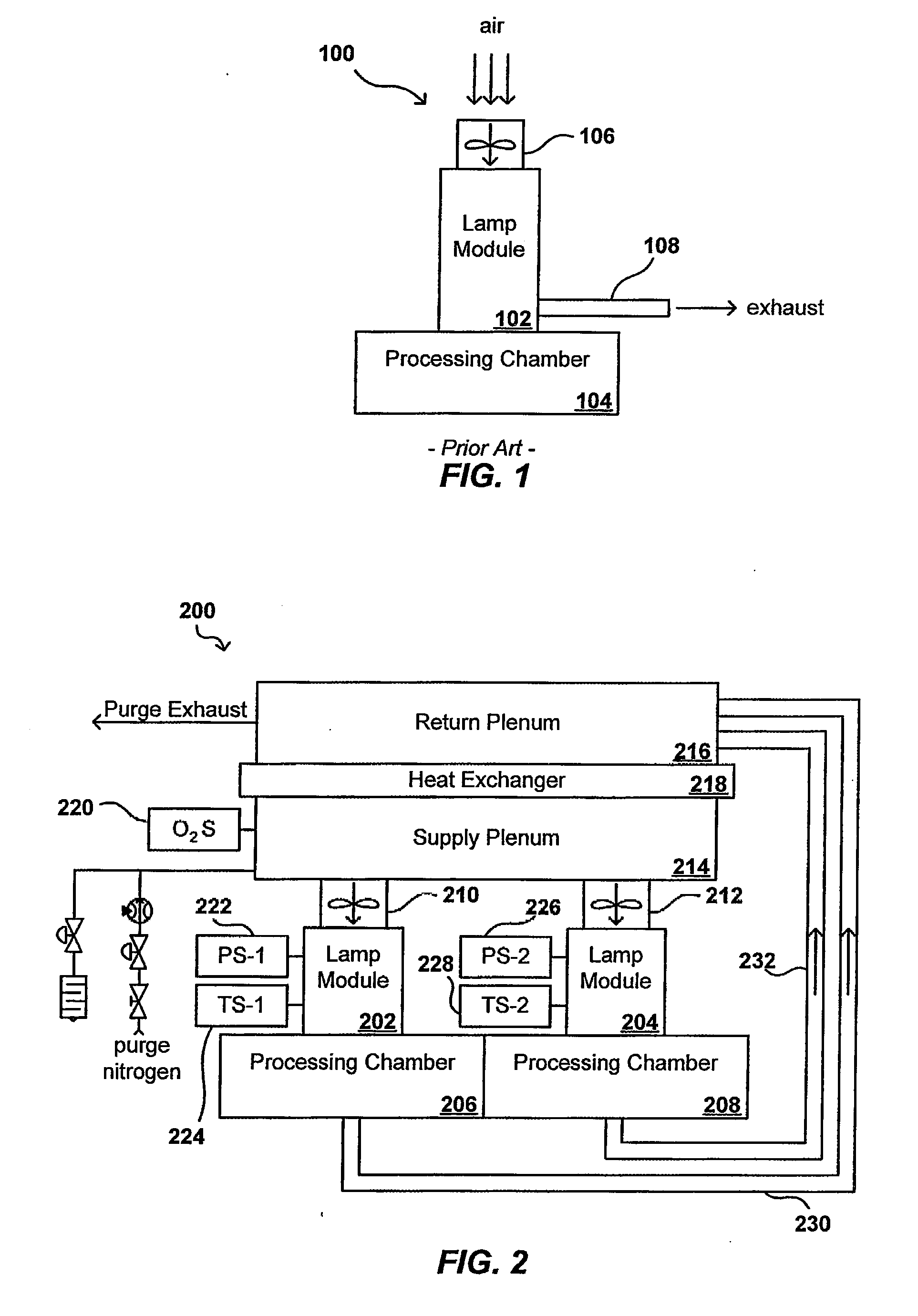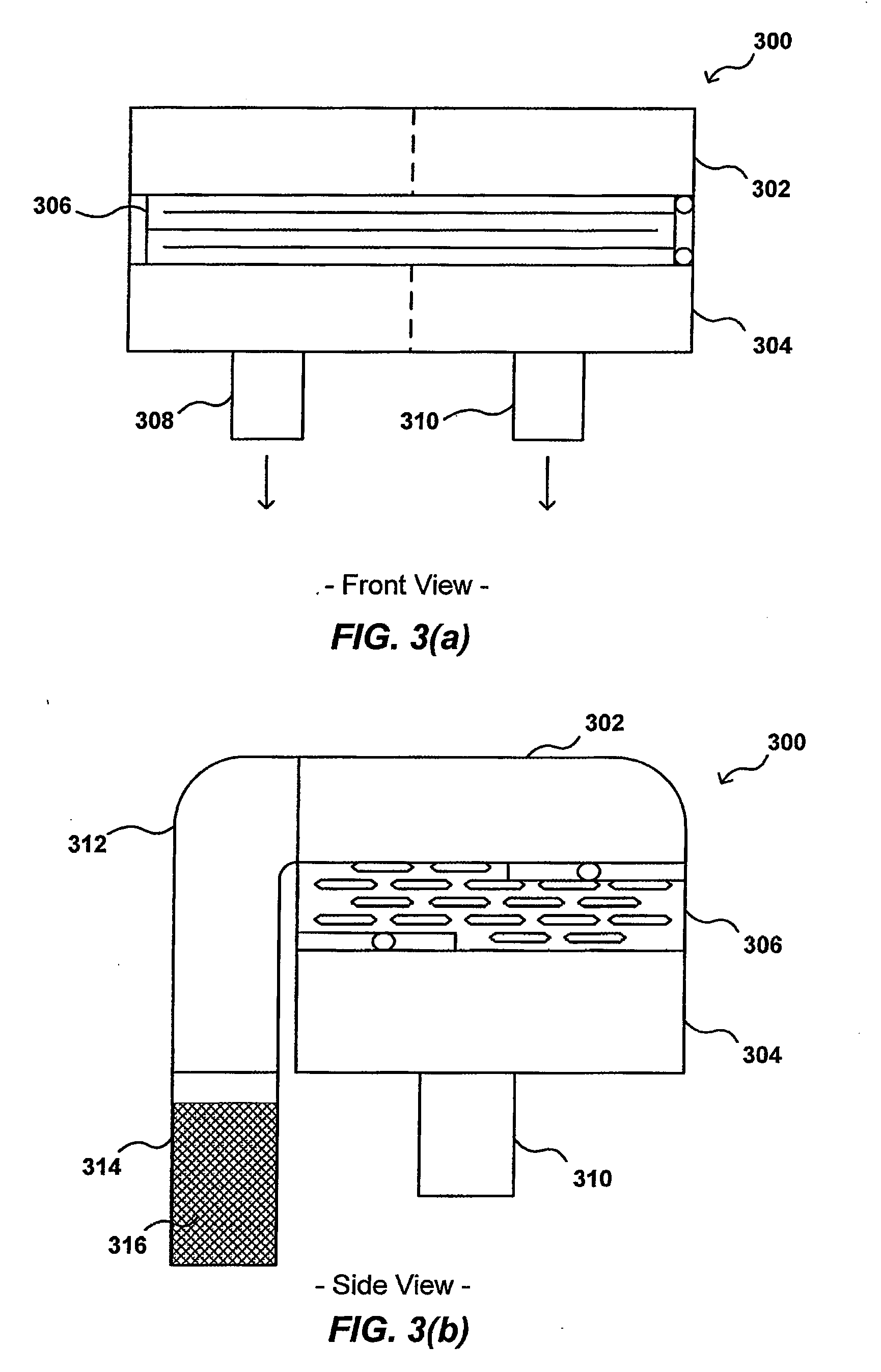Ozone abatement in a re-circulating cooling system
a cooling system and recirculating technology, applied in the direction of dispersed particle separation, separation processes, coatings, etc., can solve the problems of thermal instability or labile organic fragments of sacrificial materials, need to be removed, and undesirable water incorporation forms, so as to reduce the requirements of exhaust and seal, reduce the production of ozone, and reduce the concentration of ozon
- Summary
- Abstract
- Description
- Claims
- Application Information
AI Technical Summary
Benefits of technology
Problems solved by technology
Method used
Image
Examples
Embodiment Construction
[0033]Systems and methods in accordance with various embodiments of the present invention can overcome the aforementioned and other deficiencies in existing curing and other radiation-utilizing applications. In one embodiment, a cooling module is used to cool a radiation source (e.g., a UV lamp), the cooling module being operable to recirculate cooling fluid (e.g., nitrogen gas) through the source so as to reduce the load on the exhaust system for the production line or fabrication facility. The recirculation of a selected fluid, as opposed to the introduction of a flow of air into the system, also can provide for the reduction and / or elimination of seal requirements from users of the system, as the amount of the selected cooling fluid leaking into the system is less critical that for water vapor and feed air, which can include higher levels of oxygen, for example. The module can use a simple heat exchanger that utilizes cooling water (such as process water or another appropriate li...
PUM
| Property | Measurement | Unit |
|---|---|---|
| Flow rate | aaaaa | aaaaa |
| Concentration | aaaaa | aaaaa |
| Volume | aaaaa | aaaaa |
Abstract
Description
Claims
Application Information
 Login to View More
Login to View More - R&D
- Intellectual Property
- Life Sciences
- Materials
- Tech Scout
- Unparalleled Data Quality
- Higher Quality Content
- 60% Fewer Hallucinations
Browse by: Latest US Patents, China's latest patents, Technical Efficacy Thesaurus, Application Domain, Technology Topic, Popular Technical Reports.
© 2025 PatSnap. All rights reserved.Legal|Privacy policy|Modern Slavery Act Transparency Statement|Sitemap|About US| Contact US: help@patsnap.com



